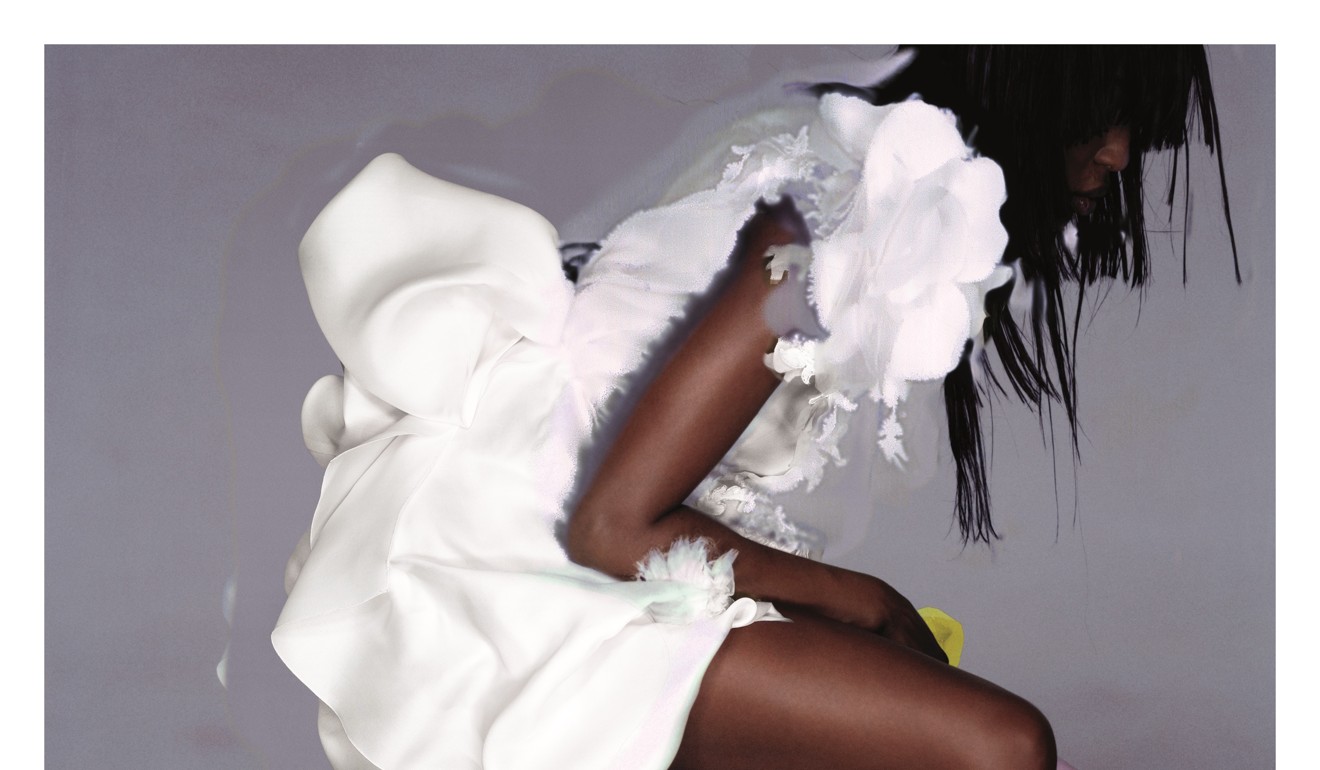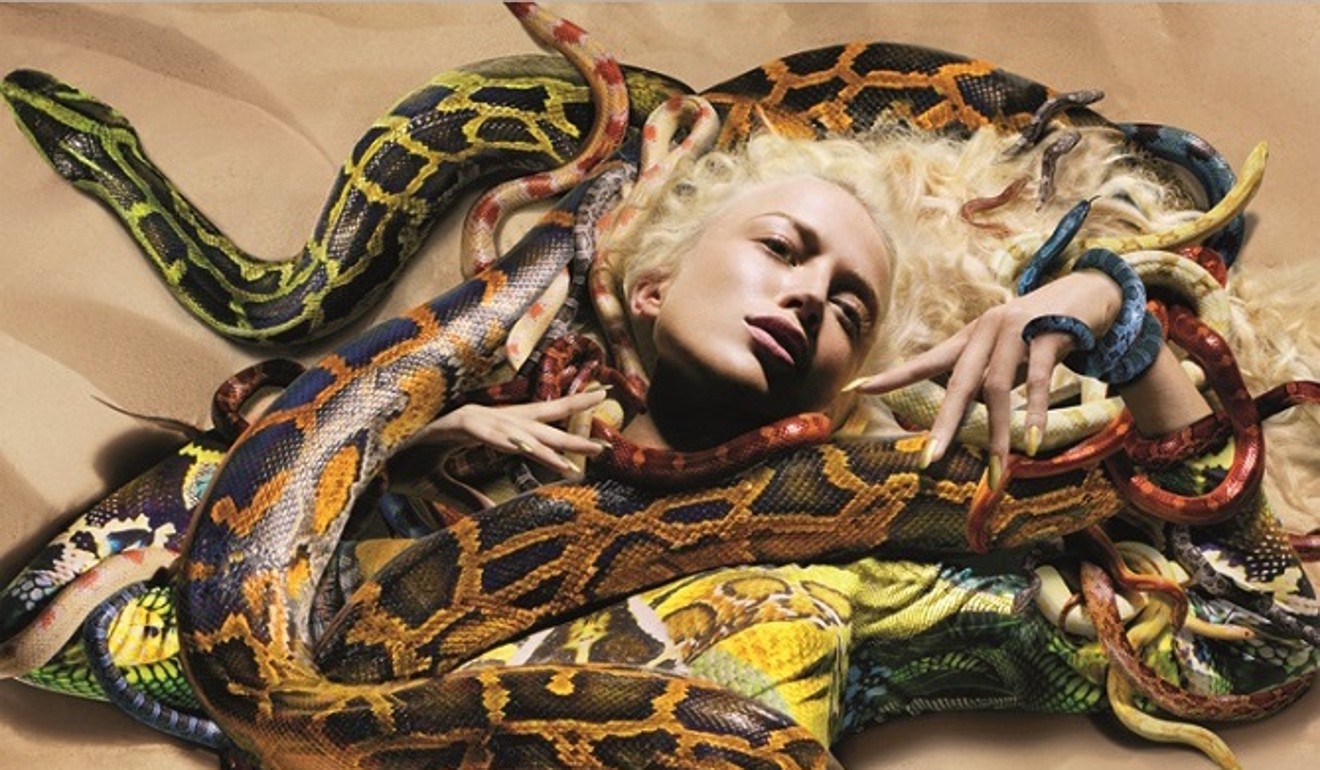British-born Nick Knight, who as the founder of digital platform Showstudio, was one of the first photographers to create fashion films, likes to call himself an image maker.
He started his career in the 1980s working for designers such as Yohji Yamamoto and went on to collaborate with the late Alexander McQueen and shoot for magazines such as Vogue.
His videos and some of his most striking photographs are currently on view at Beyond Fashion, a photography exhibition at ArtisTree in Hong Kong.
We caught up with the outspoken Knight on the eve of the opening of the exhibition. Here are excerpts from the conversation.
On fashion as art
There’s been a clear demand for fashion. Look at Savage Beauty [the 2011 exhibition about Alexander McQueen at the Metropolitan Museum in New York]. Who knew that it would be so successful? Fashion draws people to these institutions. Monet, Rembrandt and Caravaggio, all the great artists, are big draws, but museums need to have people coming through them. Someone like Alexander McQueen is a contemporary artist. Also, if you look at prices of fashion photographs at auction, you’ll see how they’ve gone up. There’s been an understanding that fashion photography is an important cultural medium. If you look back at the history of fashion photography, it’s like a barometer of cultural change in society so it has cultural value. A lot of people didn’t see it before but now they do.
Five fresh new China fashion photographers to watch, from quirky to surreal to sublime
On Japanese designer Yohji Yamamoto
I started working with him in 1986 and his brief to me was always the same: “Show me my dreams.” It was a very nice way to interpret a collection. He would never say show me a sleeve length or a garment but take me somewhere I want to go, show me what my dreams are. His aesthetic was so beautiful and poetic. Before then designers expressed themselves so sexually, which started in the ’60s up until Aids. From the arrival of the pill to Aids you had this sexual bubble. Fashion imagery was very sexualised and fashion was hypersexualised. I never enjoyed that and my career began with Yohji Yamamoto, who never showed a woman’s cleavage or back or bottom. It was about her soul or heart or poetry or mind. The power of women’s bodies versus showing their bodies. It was very new for me and a very exciting time. It was a more intellectual discourse in fashion, which I think was entirely good.
On fashion photography in Asia
What’s happening in imagery at the moment is very forward looking. It’s the separation between photography, which is the past, and image making, which is the future. Image making entails fashion film, sculpture and lots of different mediums and now also artificial intelligence and virtual reality. Asia is much more in tune with that than the West. We’re also seeing politically in North America and Europe retrospective and populist movements that look to the past, whereas Asia prefers to look to the future. There was a desire to imitate the West, but now Asia is finding its own voice. From Vietnam to South Korea, lots of artistic communities are springing up that are not interested in just following or mimicking Western art. Now you see more Western artists coming to Asia because that’s where the energy is.
On the digital revolution
Anybody with a pen can claim to be a writer, but that hasn’t created a huge amount of great work. There are more photographers now but the proliferation of digital devices has just meant that more people know about image making but not all of them have the desire and devotion to articulate their whole lives through cameras like a photographer or image maker does. It’s about your whole life talking through that lens and that medium and taking an image and expressing yourself through that medium. There’s a difference between just taking a picture and making your lifetime about taking pictures.
On the future of publishing
Magazines sell 100,000 or 50,000 issues. When someone like Kim Kardashian has more than 100 million followers the power is not with the magazines but with people like her. Magazines no longer decide who should be in fashion. Now it’s done through social media. When you broadcast a fashion show live, like we were the first to do at SHOWstudio with Plato Atlantis, McQueen’s last show, that changed fashion, because at that point you think I want that piece of clothing so why wait for a magazine to show you this three months after you established the desire? So magazines are now out of that loop; they’re no longer needed. Magazines are there to show amazing fashion photographs and regrettably a lot of them have forgotten that. They need to invest in amazing photography and image making if they want to maintain their place because that’s the only raison d’être of fashion magazines nowadays. If they don’t support great fashion imagery and don’t get behind that, there won’t be a future for them. Whenever I shoot a story for a magazine, I see it on Instagram before I ever see it in the actual magazine.
On what’s next in fashion filmmaking
We get sent at least one fashion film every day at SHOWstudio from somewhere in the world and the best fashion filmmakers are from Asia and Russia. North America doesn’t understand fashion film yet. They think it needs to have a narrative but fashion film is as different from film as fashion photography is from photography. It’s about showing a piece of clothing, not telling a story. All filmmaking needs a narrative but fashion filmmaking is not about a narrative. If you look at the history of cinema in US and Europe, it’s more narrative driven, but in Russia and Asia it’s not. There’s a very different history of filmmaking in Asia and Russia and you see that clearly in fashion films now.
On MeToo in fashion
I don’t want to sit in judgment of anybody else. Fashion grew up through the ’60s, ’70s and9’80s as a very hypersexualised medium. It was seen appropriate for people to express their sexuality through their work. I never desired to do that and never thought it would be appropriate for me to do that. Fashion grew up in a bubble, outside the norms of society, largely because as fashion photography was developing, fashion was still seen as something that was for the ladies, so businessmen didn’t look at it seriously. It was only in the ’90s that people like Bernard Arnault and Anna Wintour made fashion into a business and less an artistic medium and people started to take it seriously, but by then it had grown in a bubble and in a very unscrutinised way. That lack of scrutiny and hypersexualisation and the power that comes with fashion, because there’s a lot of money in fashion, to some degree caused people to abuse that power and that’s wrong, whether it’s in banking, dance, entertainment or the arts. If people have been abusing that power to coerce other people to behave in a way they don’t want to, then it is wrong.
“Beyond Fashion” is at ArstisTree, Taikoo Place, until February 24.
https://www.scmp.com/lifestyle/fashion-beauty/article/2181718/pioneering-fashion-filmmaker-and-photographer-nick-knight

No comments:
Post a Comment